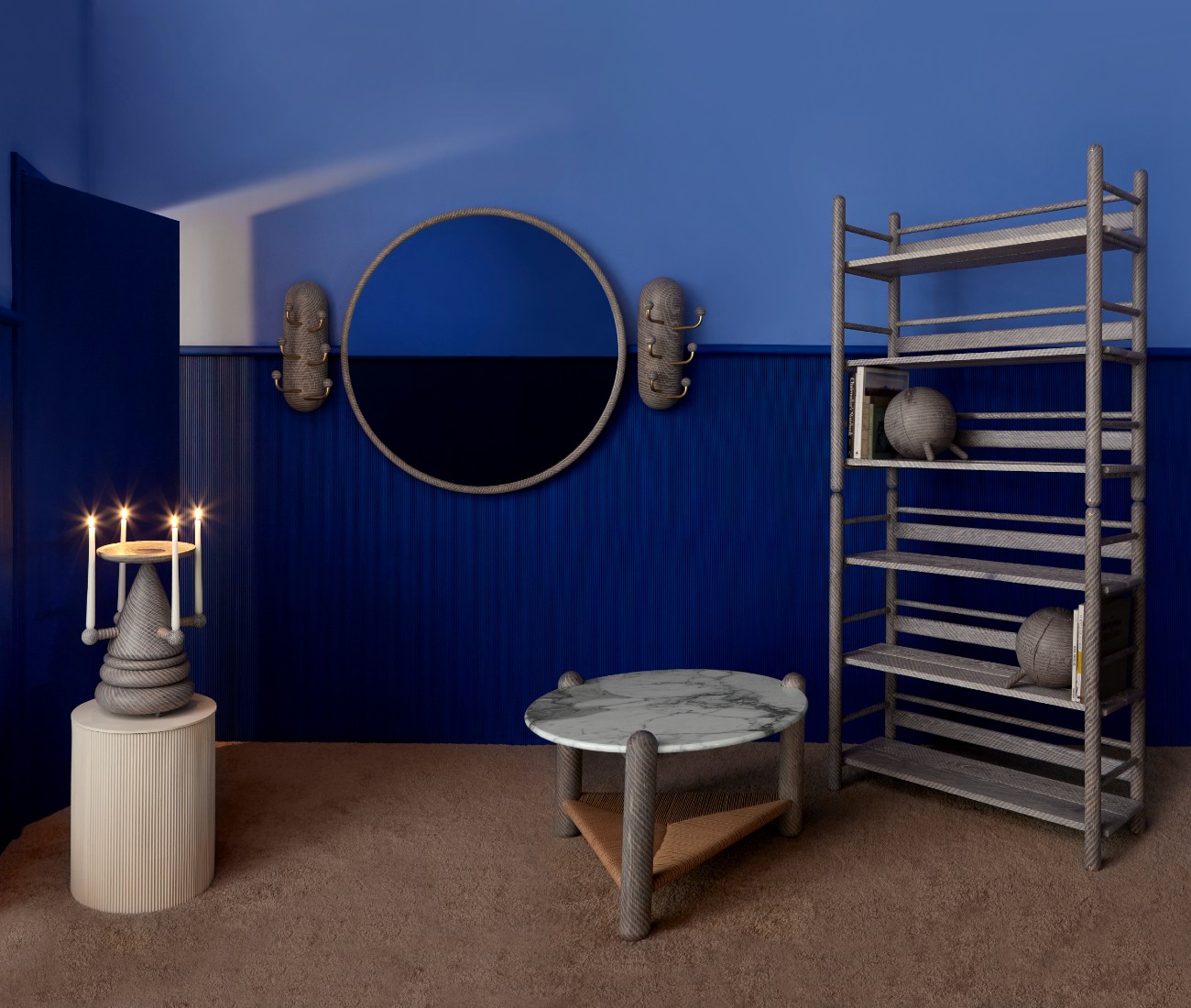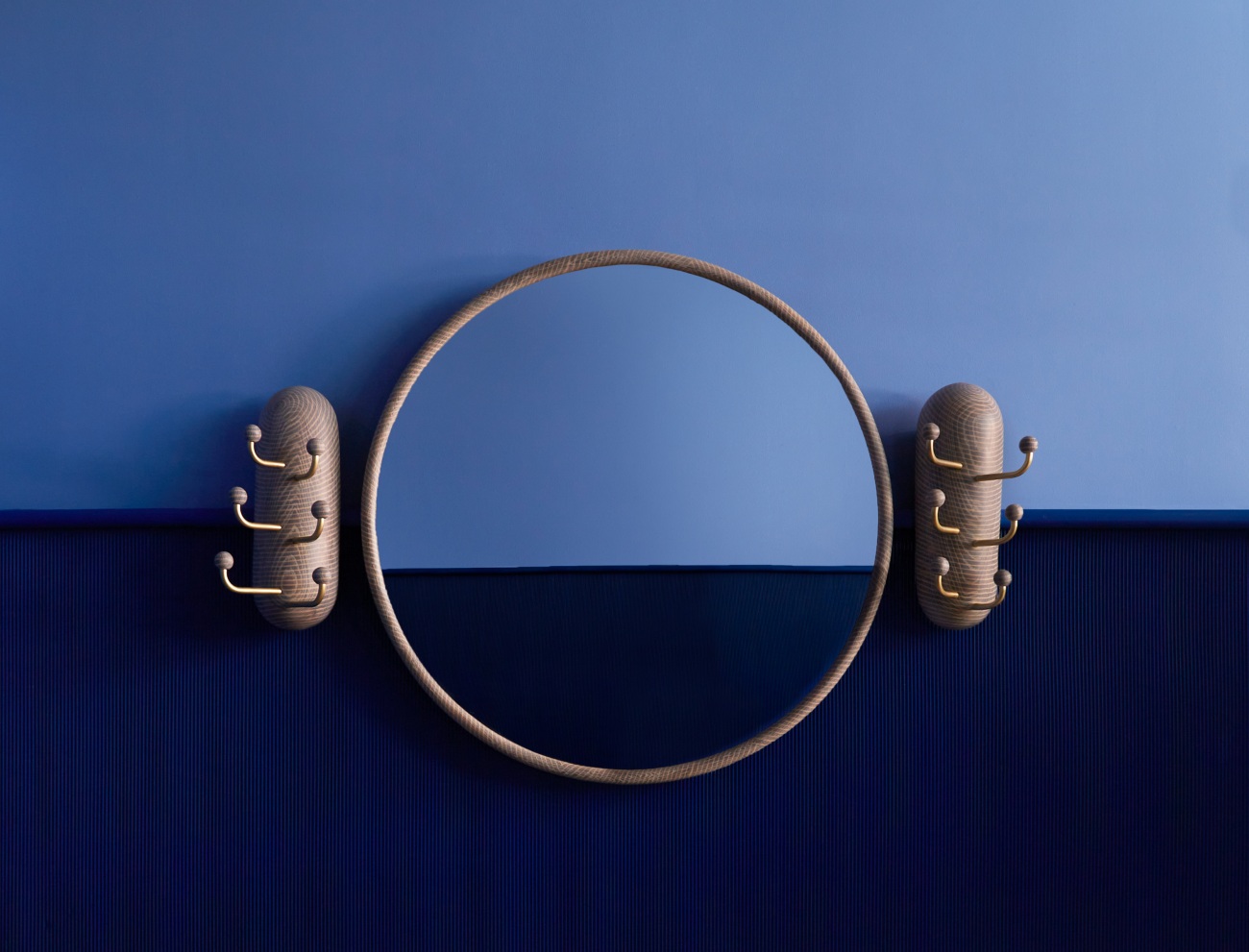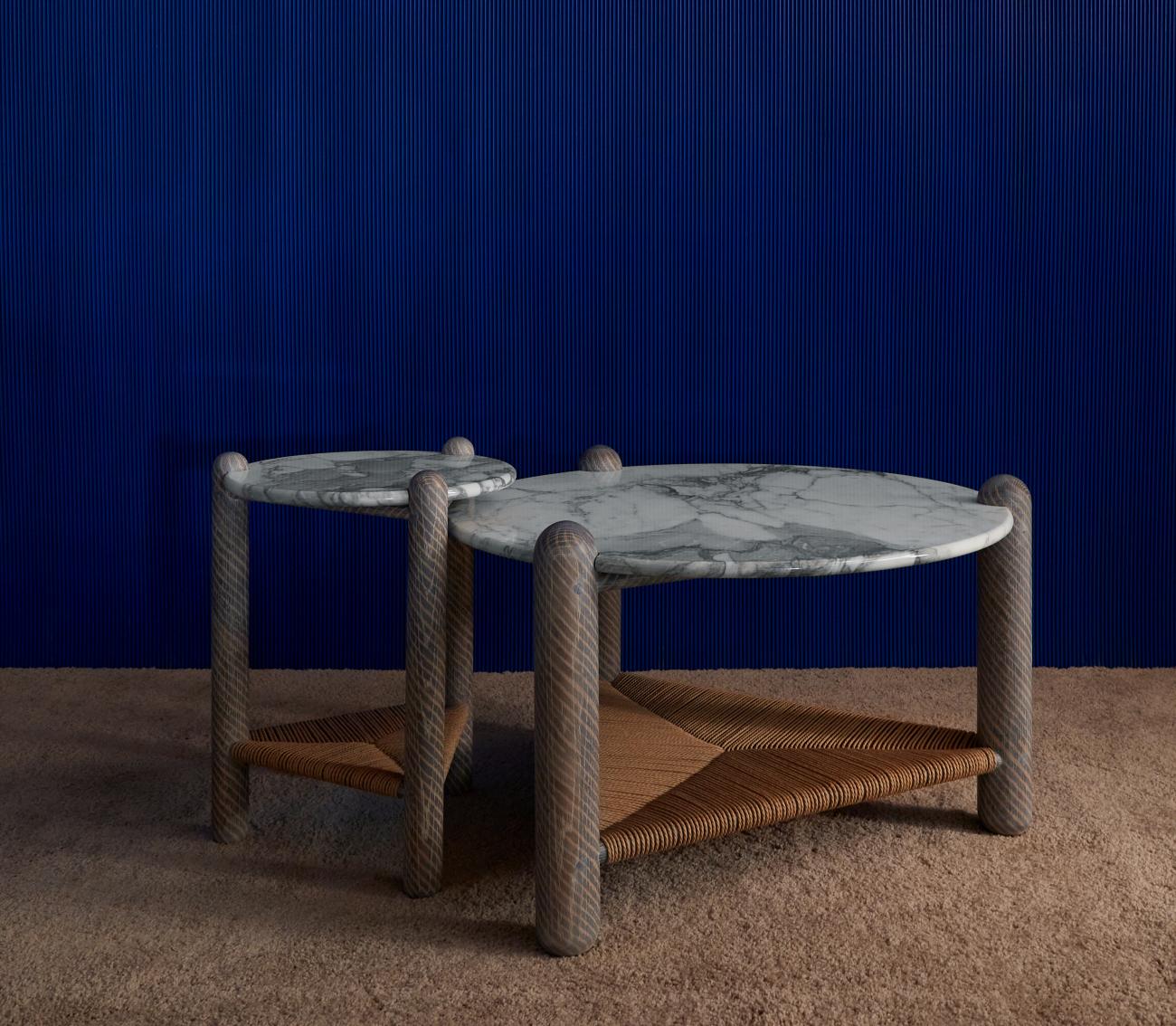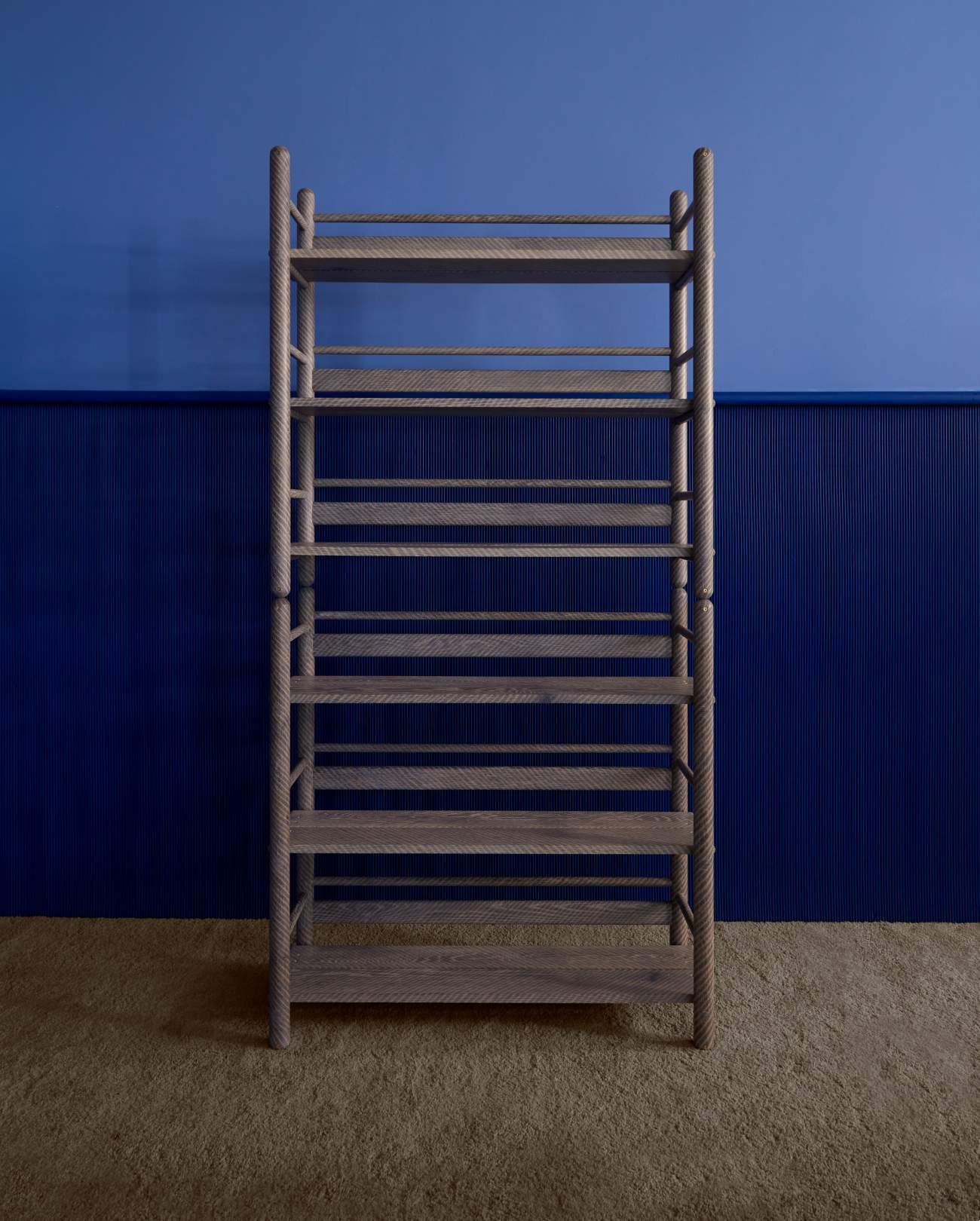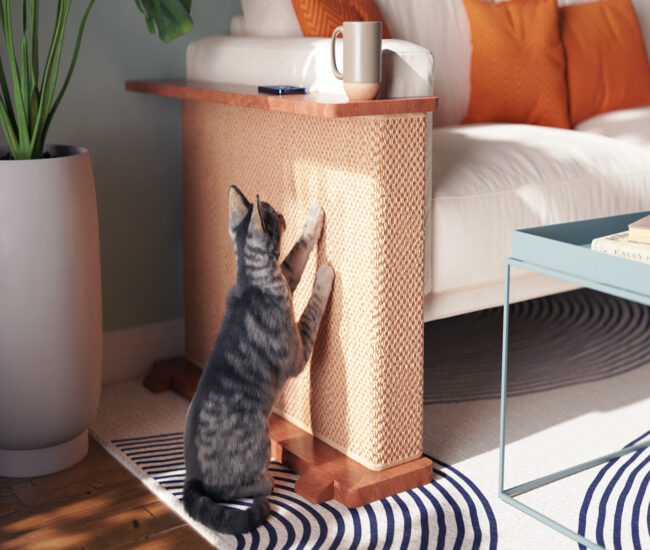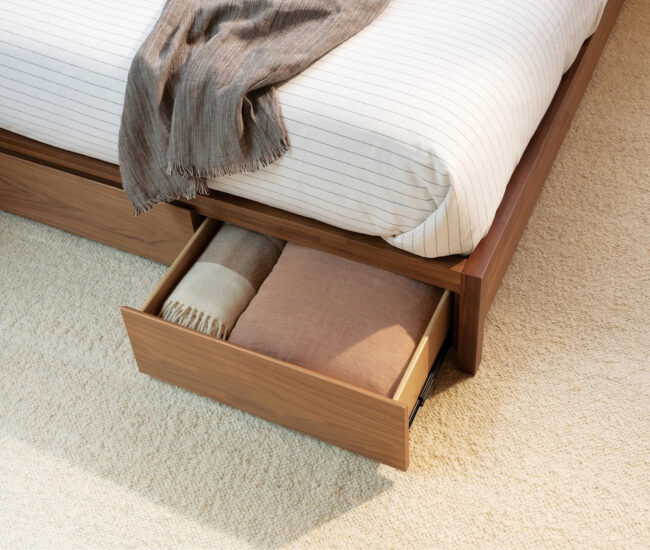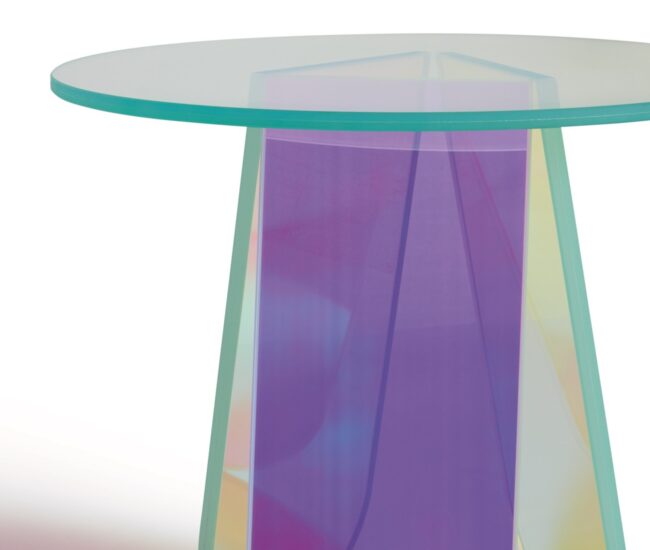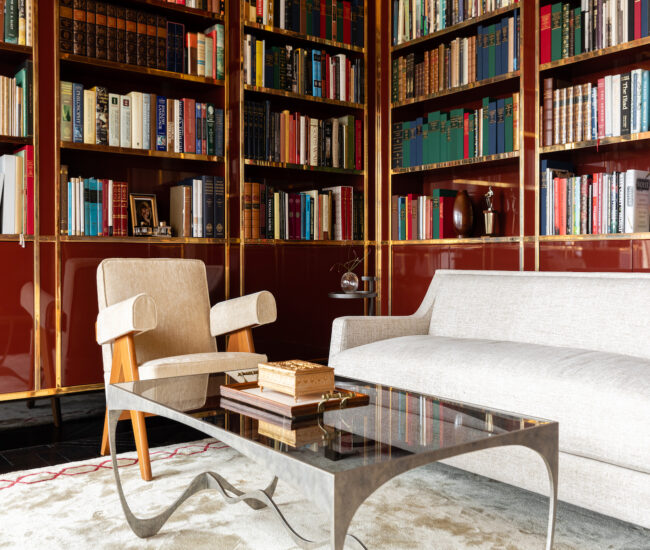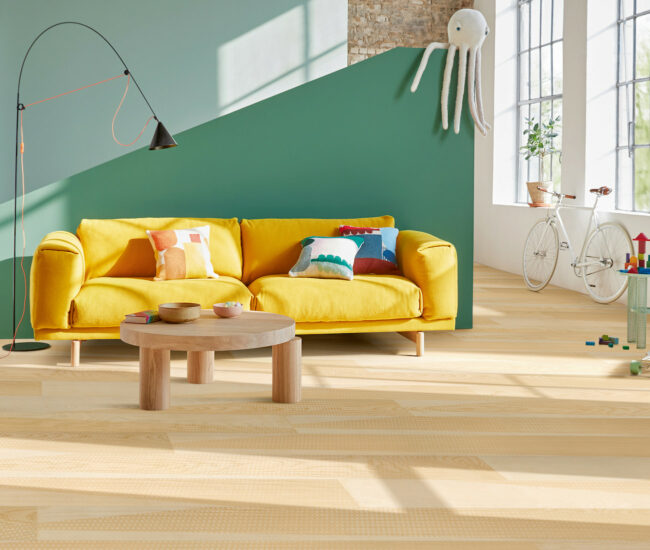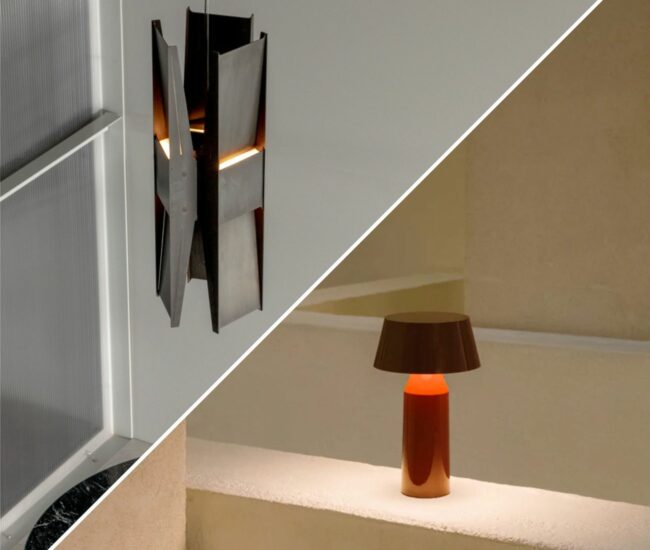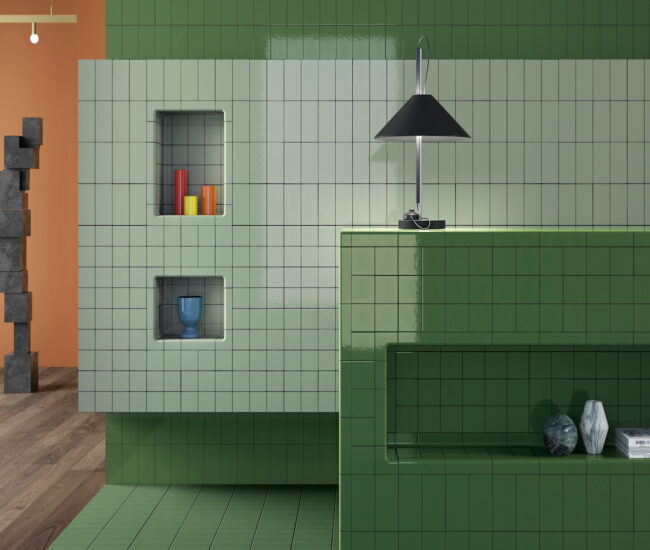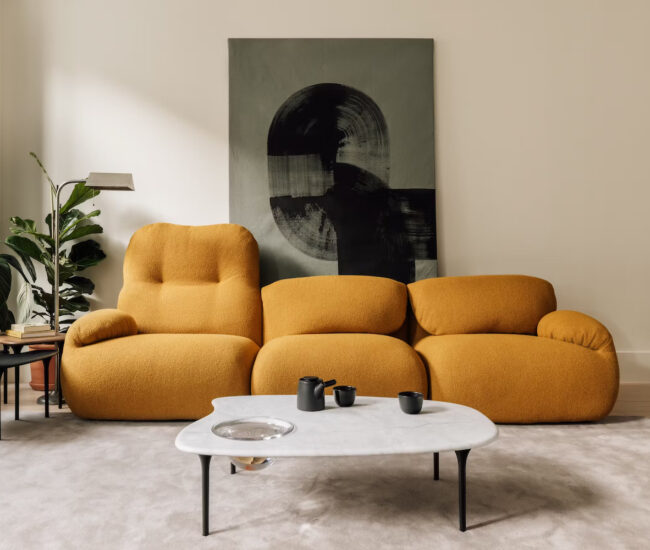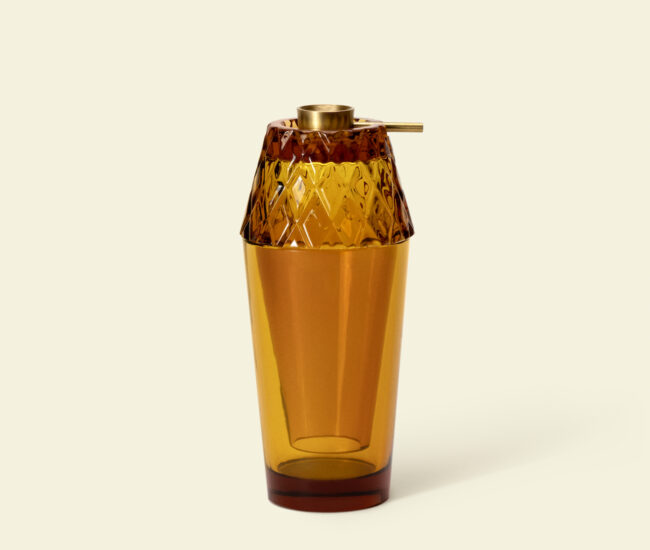With Oxalino, Nicholas Hamilton Holmes Probes the Art-Design Divide
With made-to-order and one-off pieces – and a painstaking, by-hand production process – the collection isn’t just art or design
The line between art and design is often a thin one. Depending on the object, it’s an irrelevant distinction. With Oxalino, woodworker and artist Nicholas Hamilton Holmes has created a collection that’s not one or the other, but instead occupies both sides of the divide at once.
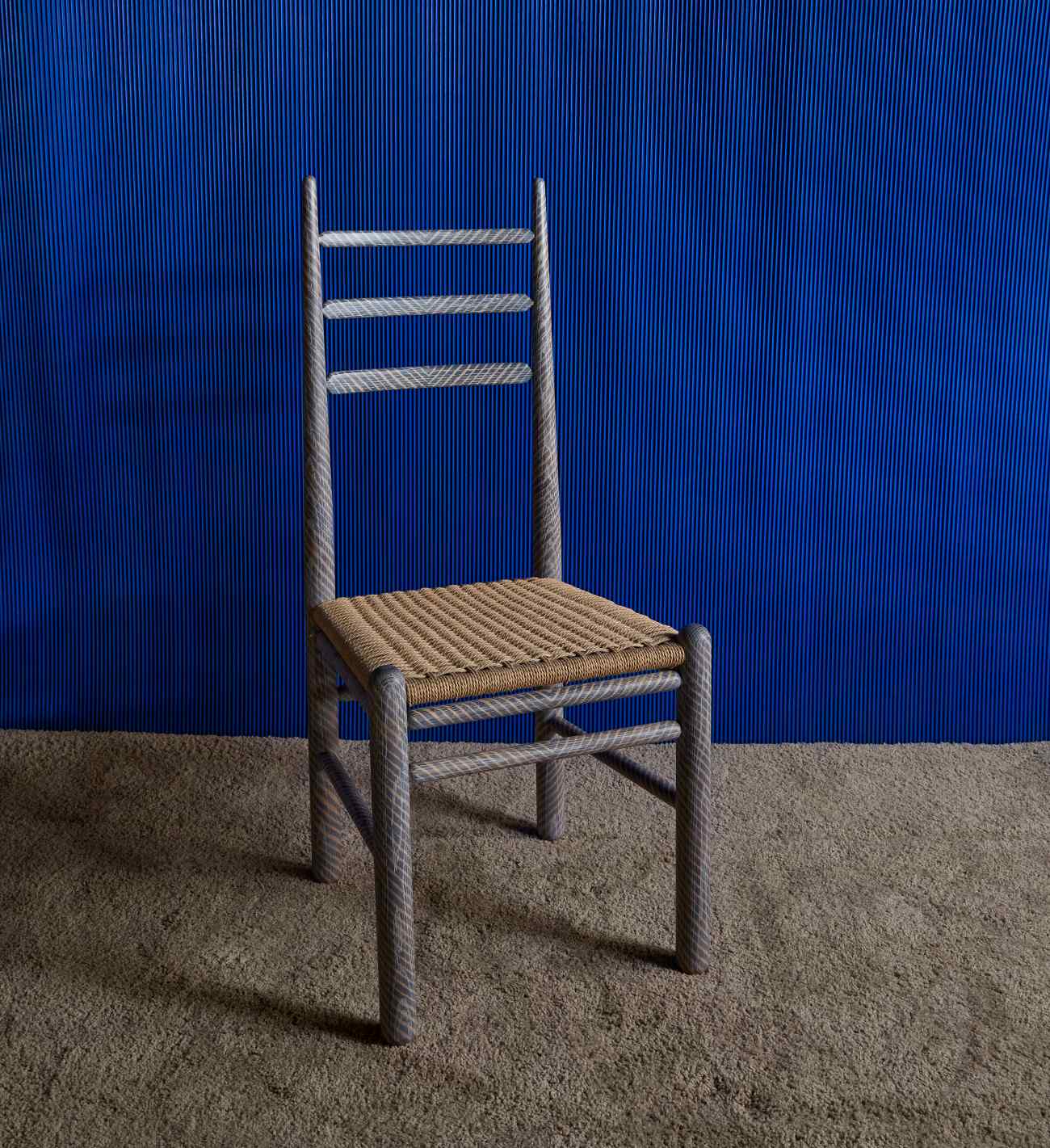
A portmanteau of “oxidize” and “line,” Oxalino brings together intuitively useful objects, including a chair, table, bookshelf, mirror and coat hooks, with less accessible ones, including “Book Bombs” and a four-candled offering bowl. Each piece is made of turned white oak or walnut and, when required, assembled with mortise and tenon joinery reinforced with brass pins. But the most striking feature, of course, is the dense, spiralling pattern running up and down each piece and from which Oxalino derives its name. Painstakingly applied by hand – it takes over 40 hours for the bookshelf – it’s what elevates each piece into a collectible object. Fast furniture this isn’t.

The process behind the hypnotic visuals is low tech and age old, requiring only a solution made of iron shavings, white vinegar and time. When applied, it oxidizes the wood, mimicking a process that would otherwise take several years in nature. Holmes’ initial results were unpromising. While the stripes were graphically engaging, the finish was dull and lacklustre. An application of white oil changed everything, though. The stripes suddenly took on a slate blue cast while the exposed wood grain was highlighted. In tandem with the stately, solid wood construction and familiar forms in the collection, the blue-and-white colouration recalls both the French countryside and old, faded tattoos.
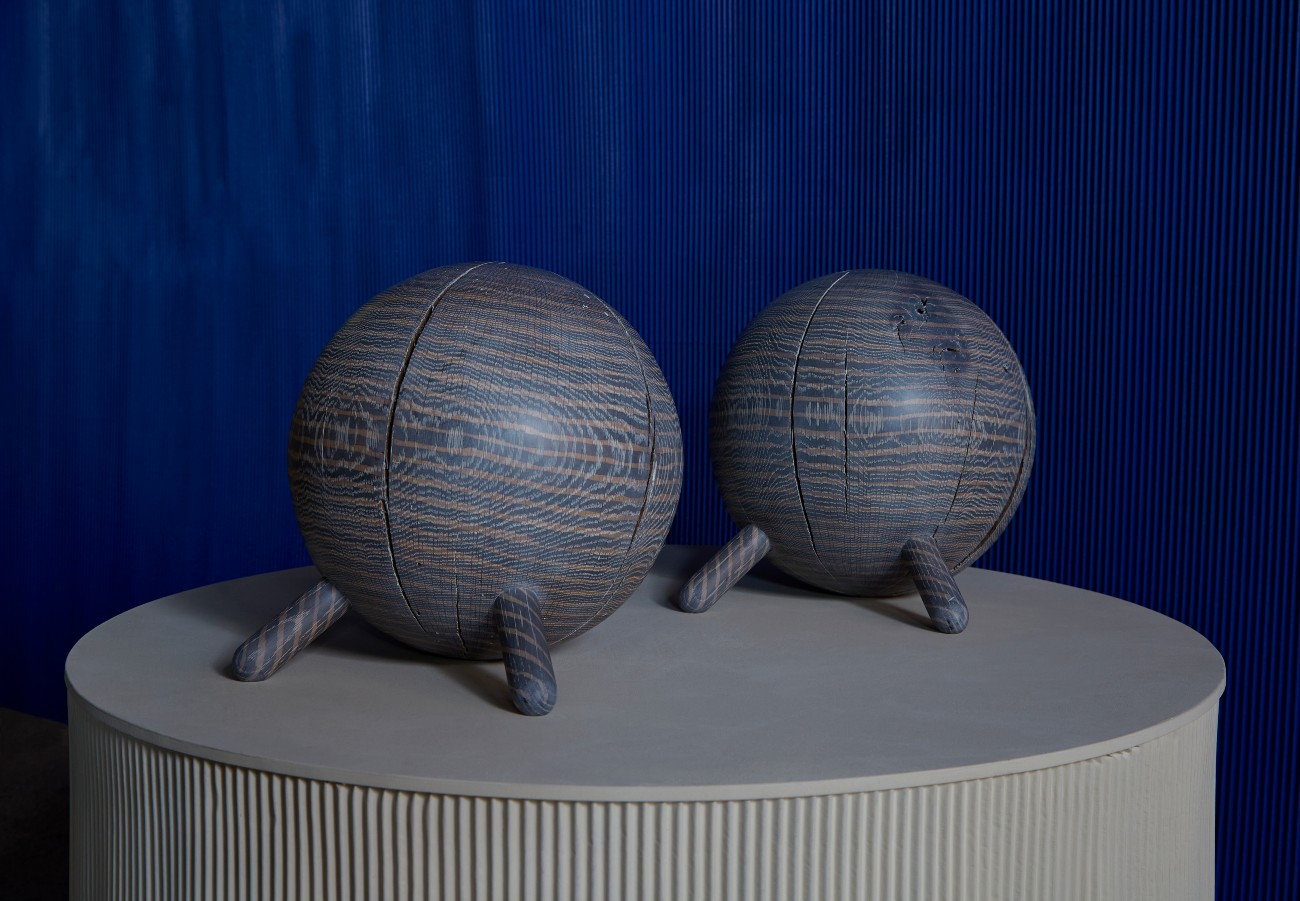
Like the operative technique behind the collection, the designs aren’t wholly new. The OS chair, Ring mirror, Captain’s table and Book Bomb have been part of Holmes’ portfolio for years. His 2018 Black Arts collection, for example, saw them rendered in blackened ash, a finish that flattened the contours of each expression. But now, almost as if addressing a previous imbalance, the spiralling pattern accentuates the topography and dimensionality of each piece. It’s less re-invention than remix, albeit one that makes a profound difference on the finished product, marking a distinct chapter in Holmes’ continued exploration of the rounded, tubular forms that have characterized his work.
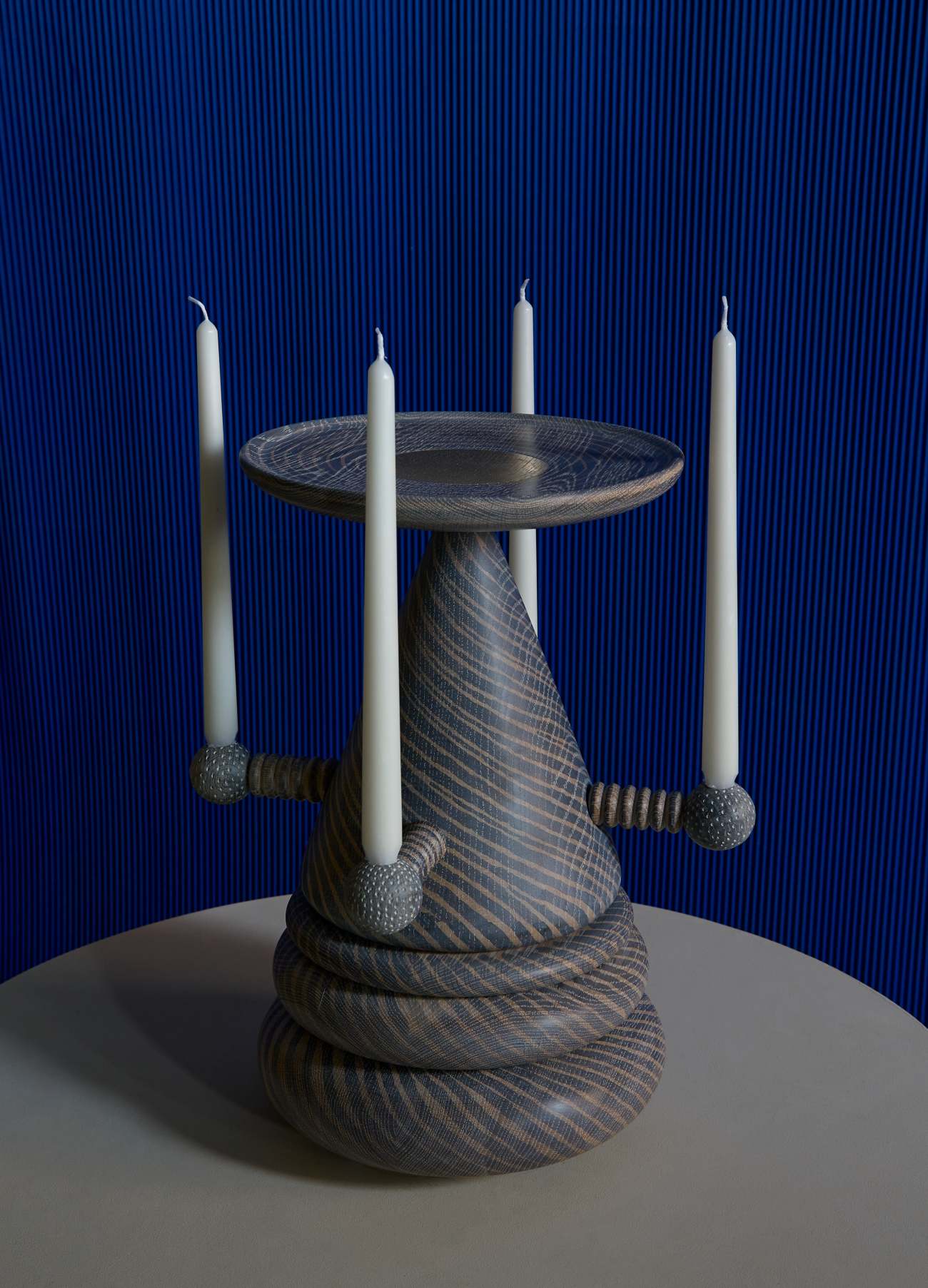
While each piece is made to order and necessarily low production, some pieces truly are unique. The Offering Bowl, Thing 1 and Thing 2 are all one and done – they’ve been made, and that’s it. The offering bowl in particular, Holmes concedes, isn’t really monetizable. It would be difficult to integrate into daily life – although he muses that someone could develop a practice around it – but that’s not really the point. It’s a one-off sculpture that exists as part of a collection of furniture that, while hardly mass-produced, will still see multiple units made. It also signals the collectibility and rarity of each piece, one-off or not. It truly makes the collection a product of art and design.
Oxalino is currently available via hamiltonholmes.com, and on display at Love House in Brooklyn, New York.

